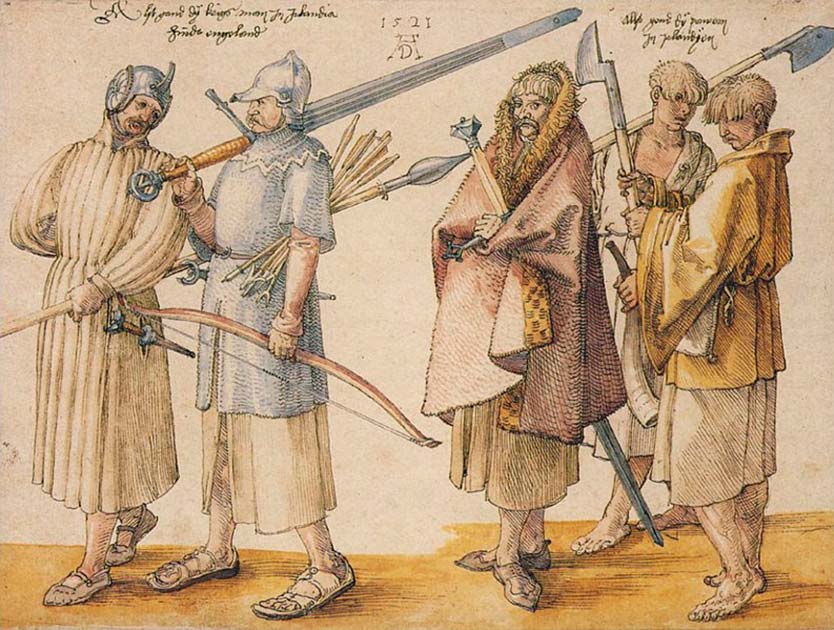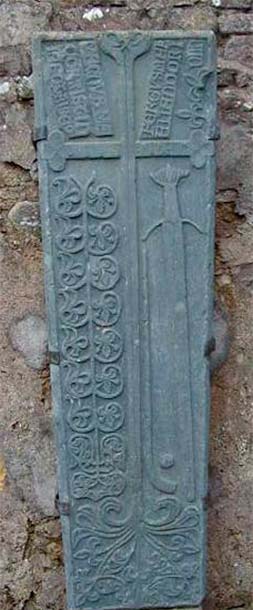The Gallowglass mercenaries were a fearsome group of warriors who emerged in medieval Ireland, bringing with them a unique fighting style and distinctive appearance. These fierce fighters, known for their battle axes and chainmail armor, quickly gained a reputation as some of the most formidable mercenaries in the land.
Their impact on Irish history and culture can still be felt today, as their legacy lives on in the clans that made up their ranks. How did this elite fighting force arise, and how did they shape the course of Irish history?
The Vikings who Stayed
The Gallowglass, or “galloglaiph” in Irish, were a group of renowned and incredibly skilled mercenaries who lived In Ireland from the mid-13th to late 16th century. They were the descendants of Norse settlers who had intermixed with the population of western Scotland before sailing across to Ireland. As such the term galloglaiph meant foreign warriors, even though the mercenaries weren’t 100% foreign.
The first Gallowglass came to Ireland from the Hebrides of Scotland. It’s believed the first band to settle landed in 1259 AD, and amazingly they were included as part of the wedding dowry of the Scottish leader Dugald MacSorley’s daughter.
The Gallowglass started out by working as bodyguards for the Gaelic chieftains of Ulster and North Connaught during the 13th century and were then increasingly used to deter the expansion of Anglo-Norman settlements.

By the 15th and 16th centuries, they had spread across Ireland and weren’t picky about who they served. They could be found in the service of both the Anglo-Norman nobility and the Gaelic chiefs. Any self-respecting Lord or Chieftain had his own army of Gallowglass mercenaries at his disposal.
These days, thanks to Hollywood and modern events, mercenaries have a patchy reputation. But the Gallowglass mercenaries were highly respected. In exchange for their services, they were given large chunks of land and eventually became part of Ireland’s hereditary nobility.
- The Varangians: Viking Conquerors turned Byzantium Honor Guard
- (List) Six of the Finest Swordsmen in History
They were also surprisingly loyal to whoever was paying them. The Gallowglass did one thing and one thing only, fight. When they weren’t fighting, they were training. As such they relied on their employers for food and housing for both them and their families.
In exchange, they gave their allegiance, which was often hereditary. One of the reasons the Gallowglass were so feared was because they were willing to fight each other. It wasn’t uncommon for the clans to be inter-related, meaning families often served rival lords.
At the battle of Knockdoe in 1504 the armies of both sides featured thousands of Gallowglass mercenaries. It was the bloodiest battle in Irish history and thousands of Gallowglass died on either side. Famed for their fearlessness, it was the Gallowglass custom to fight to the death, no matter who you were fighting or how outnumbered you were.
Special Weapons and Tactics
Adding to the Gallowglass mercenaries’ reputation was their choice of weaponry. Their signature weapon was the “Sparth,” which was designed to strike fear into the hearts of their enemies. An evolution of their Viking ancestors’ battle axes, the Sparth was a six-foot long, double-sided battle axe that was incredibly sharp.
Large weapons were what the Gallowglass did best. Those who didn’t carry a Sparth often carried giant two-handed swords known as Claymores (which comes from the Gaelic for Claiomh Mor, literally “big sword”). Both of these weapons took immense strength to wield properly.
This doesn’t mean the Gallowglass relied on brute force alone. Against well-armored opponents, they used long spears and lethal throwing darts to target gaps in the enemies’ armor.
For armor, the Gallowglass usually wore a mail shirt over a padded jacket with an iron helmet to protect the head. The Gallowglass preferred mobility over protection but would sometimes wear plate armor over the padded jacket. They had their own distinct style and often mixed and matched, wearing plate armor on just one arm.
All of this gear was heavy, so each Gallowglass soldier was usually joined by two boys who served a similar role to a knight’s squire. One would carry his throwing spears and other weapons while the other carried his master’s food and water.
- Eric Bloodaxe: Did this Viking Win an English Kingdom?
- Were There Any Victors at the Battle of Clontarf?
The Gallowglass were usually deployed in groups of 100 men called corrughadh. They were well-armored heavy infantry who offered a perfect combination of power and defense, especially compared to traditional Irish soldiers who were typically less armored.
The tactics of the Gallowglass reflected their role as fearsome defensive heavy infantry. They excelled at beating off heavy cavalry by forming a tightly packed defensive axe-swinging wall called a “Scottish Schiltron”. With their axes either extended or swinging wildly, the enemy couldn’t penetrate the wall without catching the sharp side of a Sparth.

When on the attack the Gallowglass liked to advance while swinging their axes in a figure-of-eight movement. Imagine a wall of massive, armored men running at you while swinging their axes. It would have been terrifying.
As mercenaries, the Gallowglass didn’t just stay in Ireland. Their reputation led to them being highly sought after in Europe. They took part in many major European battles and served in the Dutch Blue Guards, the Swiss Guard, and the French Scottish Guard as well as for Sweden during its invasion of Livonia in the 17th century.
The Disappearance of the Gallowglass
The Gallowglass didn’t disappear overnight. Instead, they were gradually displaced by both the increasing power of the English in Ireland and changes in military tactics.
Walls of axes were effective against cavalry but less so against gunfire. The mercenaries began to fall out of favor following the Irish defeat at the Battle of Kinsale in 1601, the climactic battle of Elizabeth I’s conquest of Ireland and the culmination of the Nine Years’ War.
After this, recruitment of the Gallowglass dropped off, but they could still be found in Ireland up until at least 1645. The true death knell for the Gallowglass culture appears to have come following the Cromwellian conquest of 1649-1653.
The surviving Gallowglass soldiers were rounded up and sold as slaves to European nations in an attempt to permanently disable Irish defense. By the end of the 16th century, they had largely ceased to exist as a distinct group: the Gallowglass were gone forever.
Top Image: The Gallowglass mercenaries became some of the finest warriors for hire in Europe. Source: Gorodenkoff / Adobe Stock.